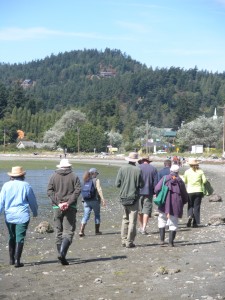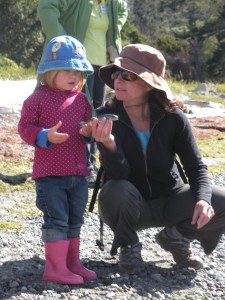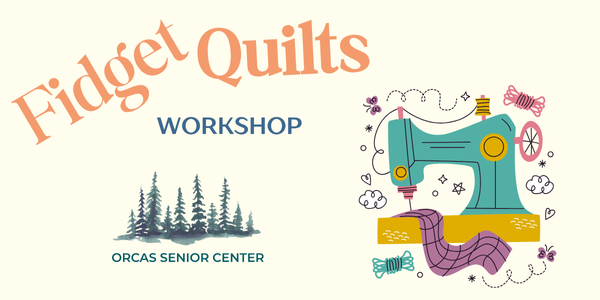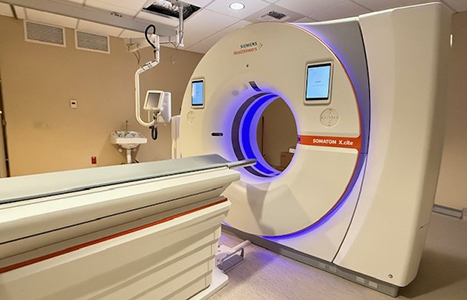by Cara Russell
Wednesday morning was another beautiful day on Orcas Island, and island residents gathered onto Crescent Beach to enjoy a free and interpretive shoreline beach walk, hosted by FRIENDS of the San Juans. Over 20 Orcas Island residents turned up, many of them beach and bluff homeowners.
First, Engineering Geologist Jim Johannessen described the formation of the San Juan Islands. Though it took over 300 million years, he compacted the general story into just a few minutes. Johannessen focused primarily on the beaches and bluffs local to Orcas and the San Juan islands. He explained the importance of bluff erosion, and how it feeds the beaches with sands and gravel.
Contrary to what some people think of Mother Nature’s plan, there are negative impacts when bulkheads are built to stop the erosion, even though it is stressful to homeowners straining to keep their houses safe from an ever-encroaching cliffside. “Erosion happens.” Johannessen said. It is important to the health of the beaches, waters and life that depend on it. But there are natural ways to slow erosion and protect your home. Planting natural vegetation, and of course, building your home at least 50 feet back from the water.
Next, FRIENDS Science Director Tina Whitman and Ph.D. Marine Biologist Mike Kaill, gave the group a hands on lesson about forage fish, shoreline vegetation and near shore fish species. Fish like smelt, herring, and anchovies use the beaches to spawn. All are eaten by salmon, and who likes to eat salmon? People of course. And not just salmon feed on these little fish, birds like scooter birds stop to feed on these little guys as well.
FRIENDS also talked about Cherry Point. It used to be the largest herring spawning place in Washington state. But the herring spawn timing is getting reduced, and unexplained abnormalities are being found in the fish. And although there are all kinds of theories, no one knows why.
Sea levels are steadily rising, estimated two to four feet by 2100, and Crescent Beach Road will one day be a thing of the past. There is also a rise in temperature, and as the ocean gets warmer we will keep seeing changes. For example, Anchovies are getting to be more common in our waters. The PH in the water is also being affected, so calcium-based sea animals, like shellfish and invertebrates, will start seeing large changes.
It seems awfully familiar to an old lesson I learned in grammar school. I had taken a giant piece of poster paper, started by drawing little green dots of algae at the bottom, and slowly I formed a web of connections all the way to the top of the board, where I drew a little man in a fishing boat. We know all life is connected, but classes like this one offered by FRIENDS is a nice reminder, just in case we have forgotten as adults.
For more information visit the FRIENDS of the San Juans website.
**If you are reading theOrcasonian for free, thank your fellow islanders. If you would like to support theOrcasonian CLICK HERE to set your modestly-priced, voluntary subscription. Otherwise, no worries; we’re happy to share with you.**









